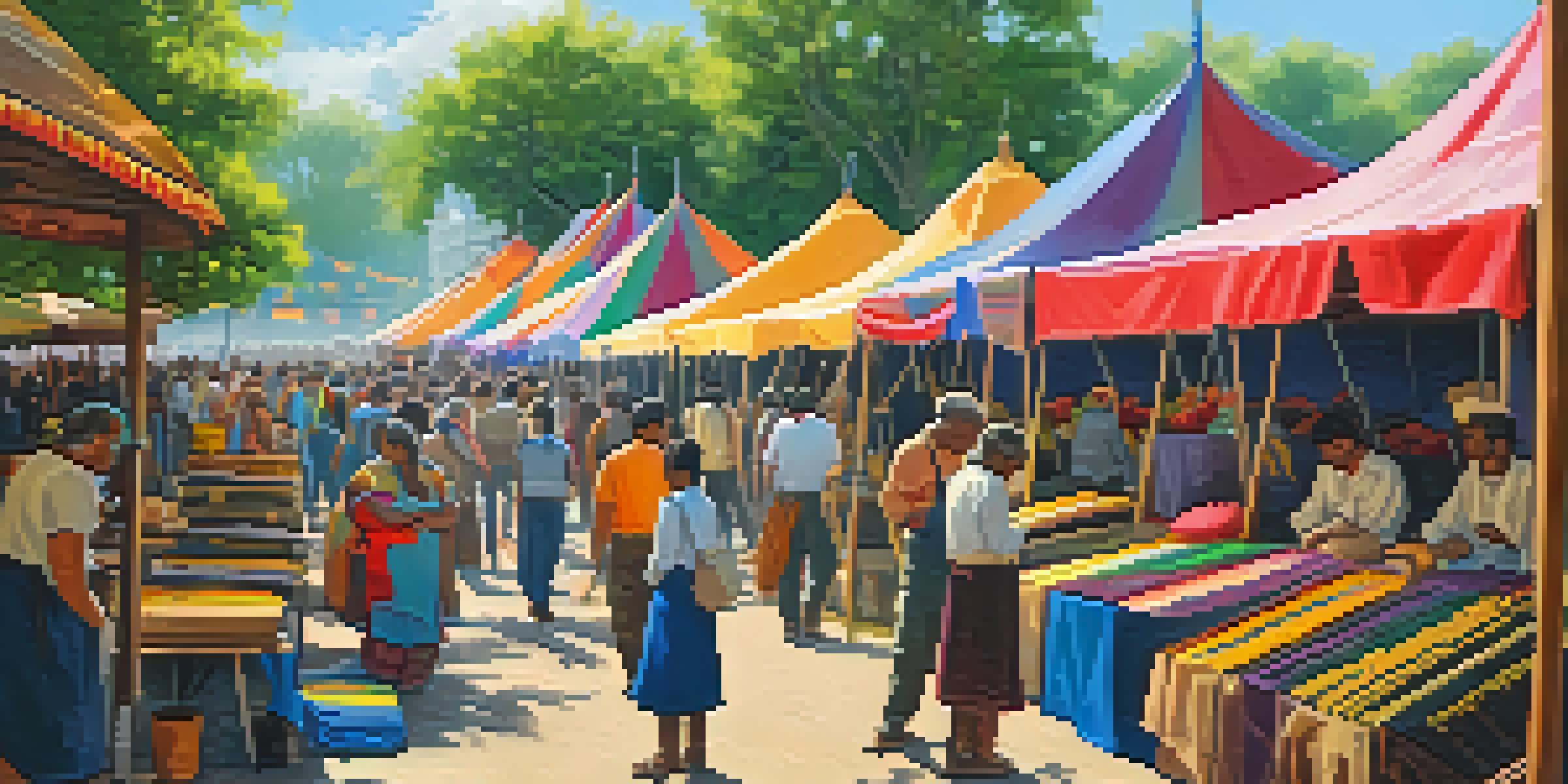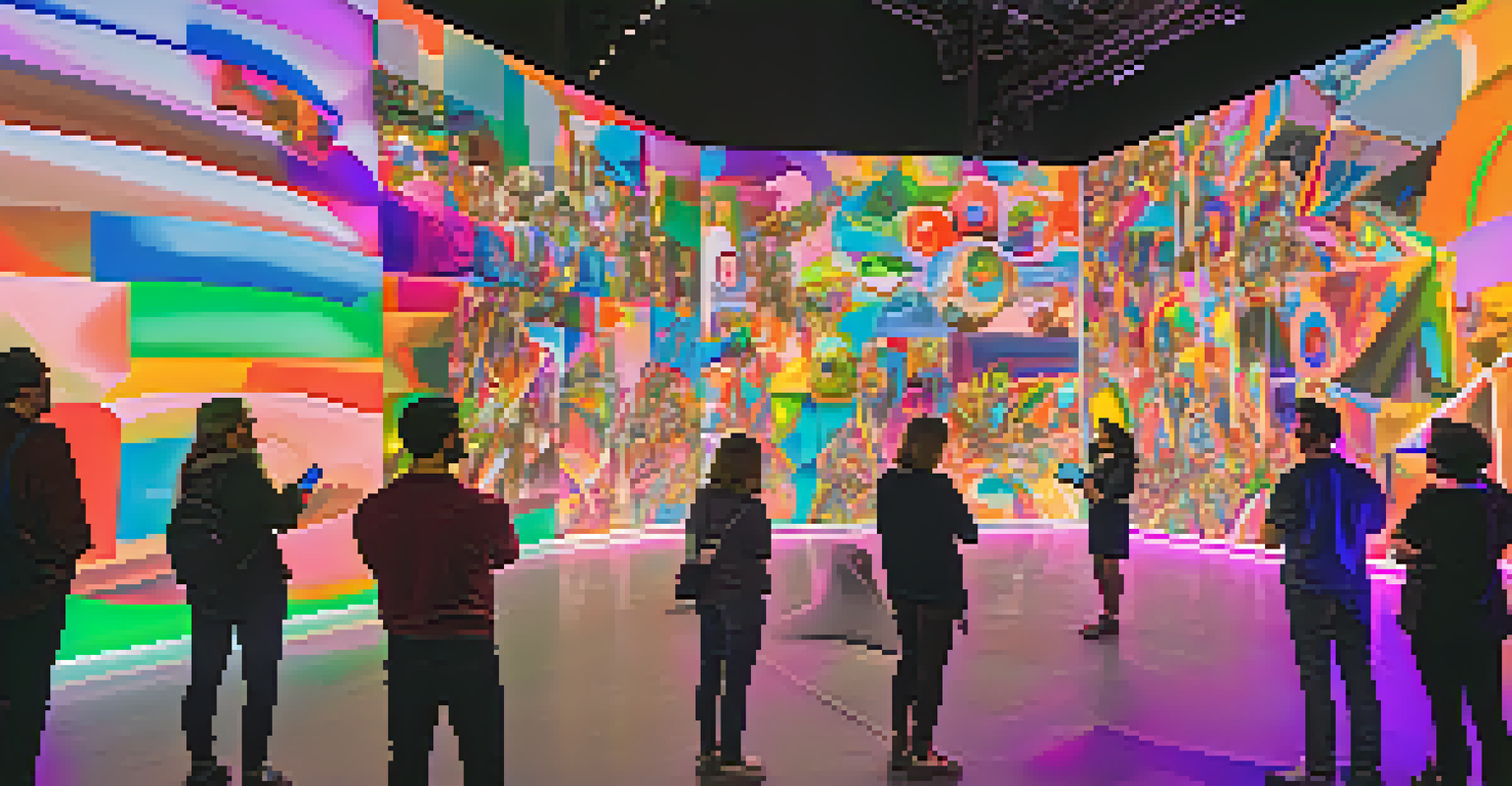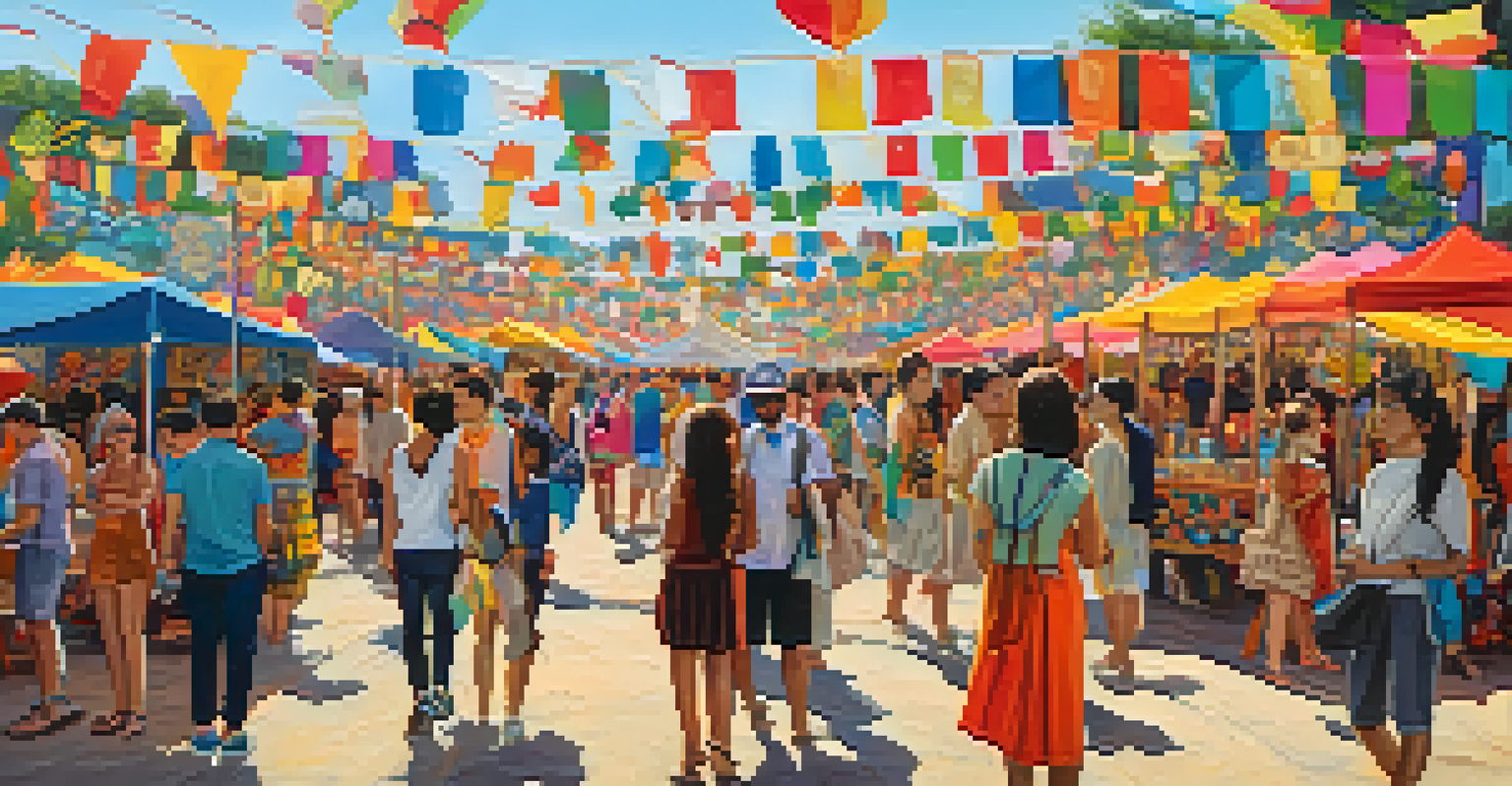Art Festivals: A Platform for Traditional and Contemporary Arts

The Role of Art Festivals in Cultural Preservation
Art festivals serve as vibrant platforms for showcasing traditional art forms, ensuring they are passed down through generations. These events often highlight local artisans, giving them a stage to share their craftsmanship with a broader audience. By celebrating these time-honored practices, festivals play a crucial role in preserving cultural heritage.
Art is not what you see, but what you make others see.
For instance, festivals featuring indigenous art provide opportunities for artists to demonstrate their techniques and narratives. This not only fosters community pride but also educates festival-goers about the significance of these traditions. As visitors engage with the art, they gain a deeper appreciation for the culture it represents, creating lasting connections.
Moreover, these festivals often host workshops and demonstrations, inviting attendees to participate actively. This hands-on approach allows everyone to experience the richness of traditional arts firsthand. In doing so, art festivals become essential spaces for cultural dialogue and understanding.
Celebrating Contemporary Art Through Festivals
Contemporary art festivals have emerged as dynamic venues for innovative artistic expression. They often showcase cutting-edge works that challenge conventions and provoke thought, making art accessible to a wider audience. By featuring diverse mediums, from installations to digital art, these festivals reflect the evolving landscape of modern creativity.

Take, for example, a contemporary art festival that includes immersive experiences and interactive installations. Such events encourage visitors to engage with the art in unique ways, blurring the lines between artist and audience. This participatory approach not only captivates attendees but also fosters a sense of community around shared experiences.
Art Festivals Preserve Culture
Art festivals serve as vital platforms for showcasing traditional art forms, ensuring cultural heritage is passed down through generations.
Furthermore, contemporary art festivals often serve as incubators for emerging artists. By providing them with exposure and networking opportunities, these events help cultivate the next generation of creative talent. This nurturing environment is vital for the continued evolution of the art world.
Bridging Traditional and Contemporary Art
One of the most exciting aspects of art festivals is their ability to bridge traditional and contemporary art forms. Many festivals curate exhibitions that juxtapose historic works with modern interpretations, sparking conversations about the evolution of artistic expression. This blending of styles not only honors the past but also inspires future generations of artists.
The best artist has no conception that a marble block does not contain within itself.
For example, a festival might feature traditional painting techniques alongside digital art that reinterprets those same themes. Such pairings invite visitors to explore the continuity and change in artistic practices across time. This dialogue between old and new enriches the overall festival experience, making it a feast for the senses.
Moreover, this cross-pollination of ideas encourages collaboration among artists from different backgrounds. When traditional artisans and contemporary creators come together, they can learn from one another and push the boundaries of their respective crafts. This collaboration not only enhances the quality of the art on display but also fosters a spirit of innovation.
Engaging Communities Through Art Festivals
Art festivals are not just about showcasing art; they also play a vital role in community engagement. By bringing people together to celebrate creativity, these events foster a sense of belonging and pride among residents. Local art festivals often include activities that involve the community, such as parades, performances, and art walks.
These gatherings create opportunities for networking and collaboration among local artists, businesses, and residents. For instance, a community festival might feature local musicians performing alongside visual artists, creating a rich tapestry of cultural experiences. This synergy not only supports local talent but also boosts the economy by attracting visitors.
Economic Boost from Festivals
Art festivals significantly contribute to local economies by attracting tourists who spend on various services and support local artists.
Furthermore, art festivals often prioritize accessibility, ensuring that art is available to everyone. Many festivals offer free or low-cost admission, workshops, and activities for all ages. This commitment to inclusivity enhances community involvement and ensures that the arts remain a vital part of everyday life.
The Economic Impact of Art Festivals
Art festivals can significantly contribute to local economies, bringing in tourists and boosting business. When people flock to these events, they not only purchase art but also spend money on food, lodging, and transportation. This influx of visitors creates a ripple effect, benefiting various sectors of the local economy.
For example, a city hosting an art festival might see increased sales for local restaurants and shops during the event. Additionally, hotels and accommodations often experience a surge in bookings, providing a much-needed boost to the hospitality industry. This economic impact can be long-lasting, as positive experiences may encourage visitors to return or recommend the destination to others.
Moreover, many festivals also invest in local artists and artisans, providing them with platforms to sell their work. This support helps sustain the local art scene and ensures that artists can continue to thrive. In this way, art festivals not only celebrate creativity but also contribute to the financial health of the community.
Promoting Diversity Through Art Festivals
Art festivals are powerful platforms for promoting diversity and inclusivity within the arts. By featuring artists from various cultural backgrounds, these events celebrate the richness of different perspectives and experiences. This commitment to diversity not only enhances the artistic offerings but also fosters a sense of belonging for all attendees.
For instance, festivals that highlight multicultural art forms can introduce audiences to new ideas and practices. This exposure broadens the understanding of art and its impact on society, encouraging empathy and connection. As festival-goers engage with diverse works, they are invited to reflect on their own experiences and the world around them.
Diversity and Inclusivity in Art
By promoting artists from diverse backgrounds, art festivals enhance cultural dialogue and foster a sense of belonging among attendees.
Additionally, many art festivals actively seek to support underrepresented artists, providing them with opportunities to showcase their work. This intentional focus on inclusion helps to dismantle barriers and creates a more equitable art landscape. By championing diversity, art festivals contribute to a richer cultural dialogue.
The Future of Art Festivals
As we look to the future, art festivals are likely to evolve in response to changing societal trends and technological advancements. The integration of digital platforms has already begun to reshape how festivals operate, allowing for virtual attendance and broader reach. This flexibility can help festivals adapt to various circumstances while maintaining their core mission of celebrating art.
Moreover, the growing emphasis on sustainability is likely to influence festival planning and execution. Many organizers are now prioritizing eco-friendly practices, from waste reduction to supporting local vendors. This shift not only reflects a commitment to the environment but also resonates with attendees who value sustainability.

Ultimately, the future of art festivals will hinge on their ability to remain relevant and responsive to the needs of artists and audiences alike. By embracing innovation while honoring tradition, art festivals can continue to be vital cultural hubs that inspire creativity and connection for years to come.